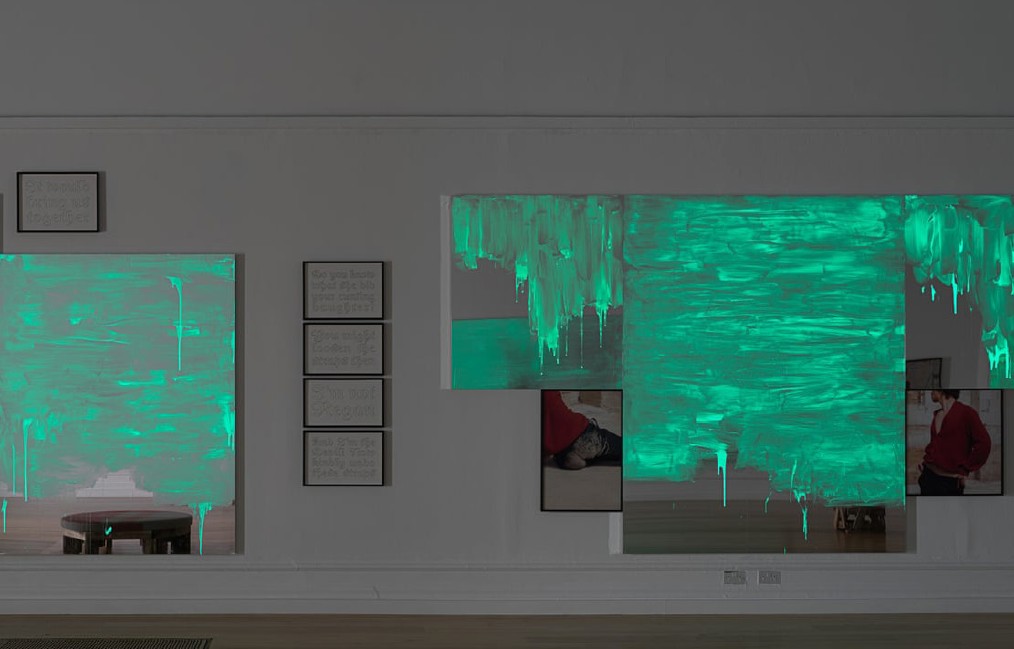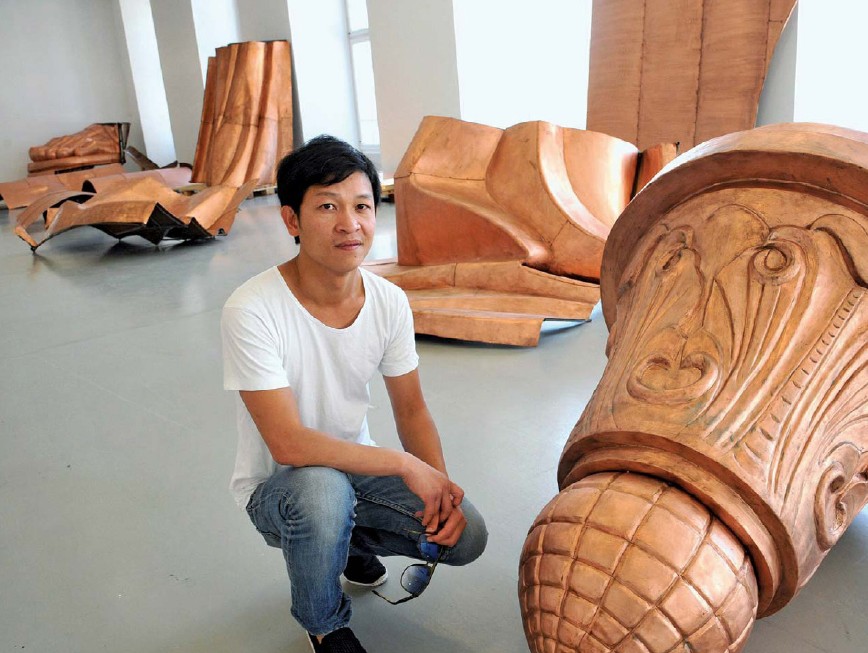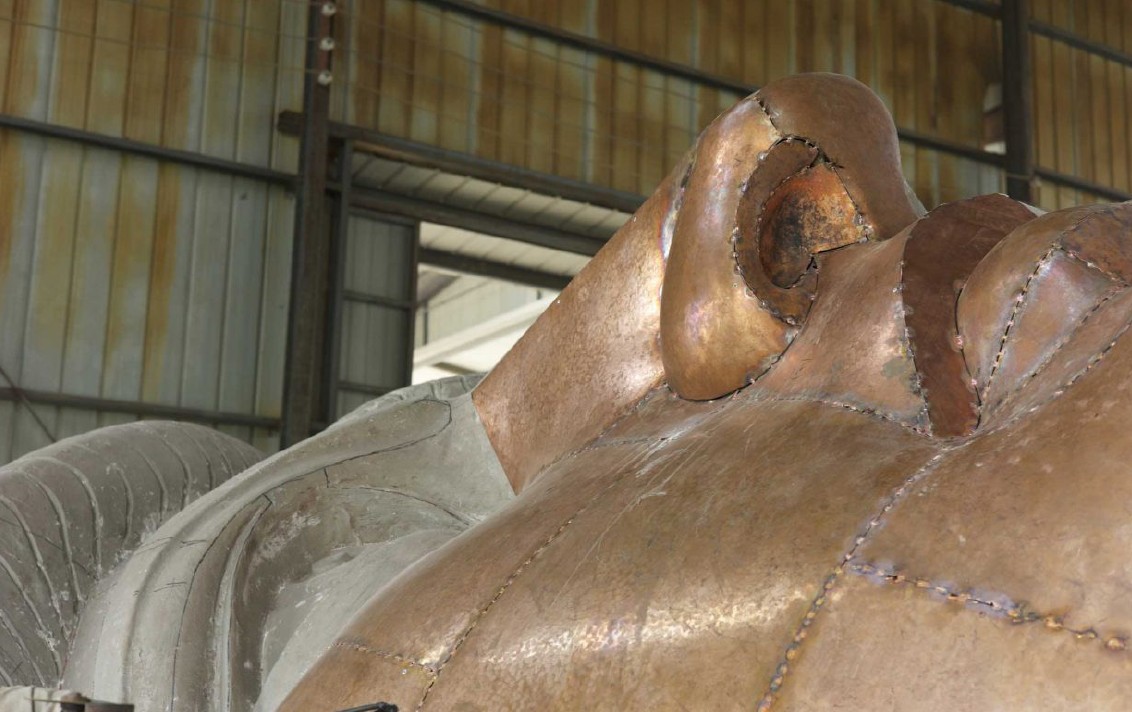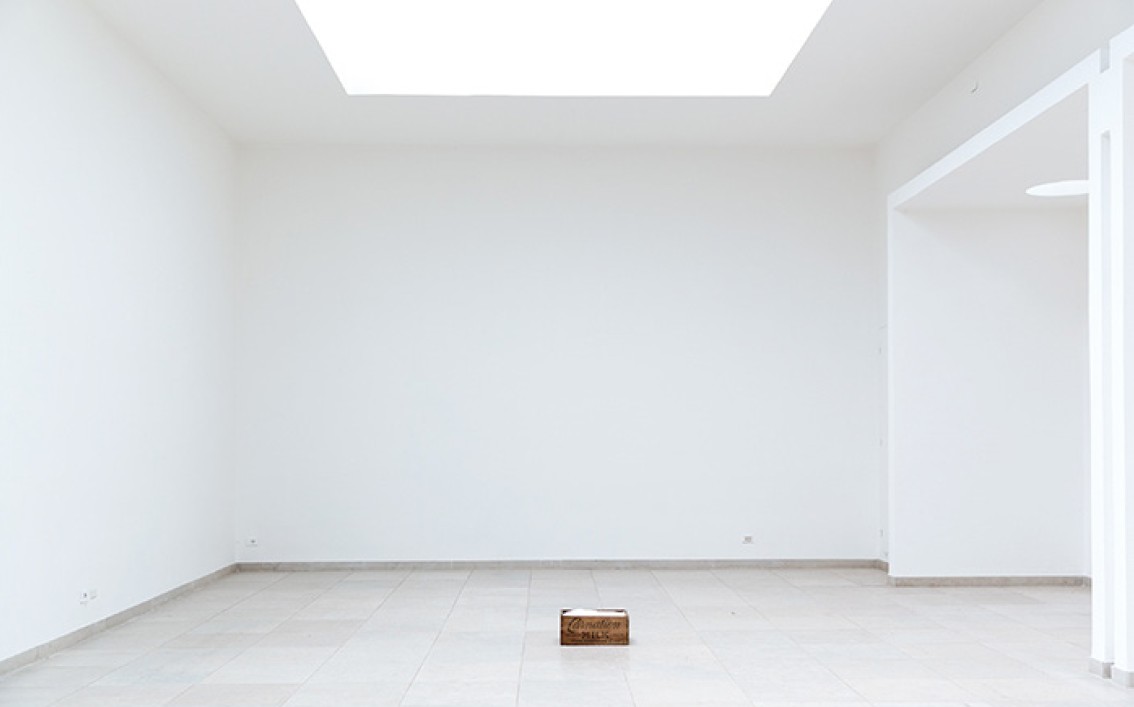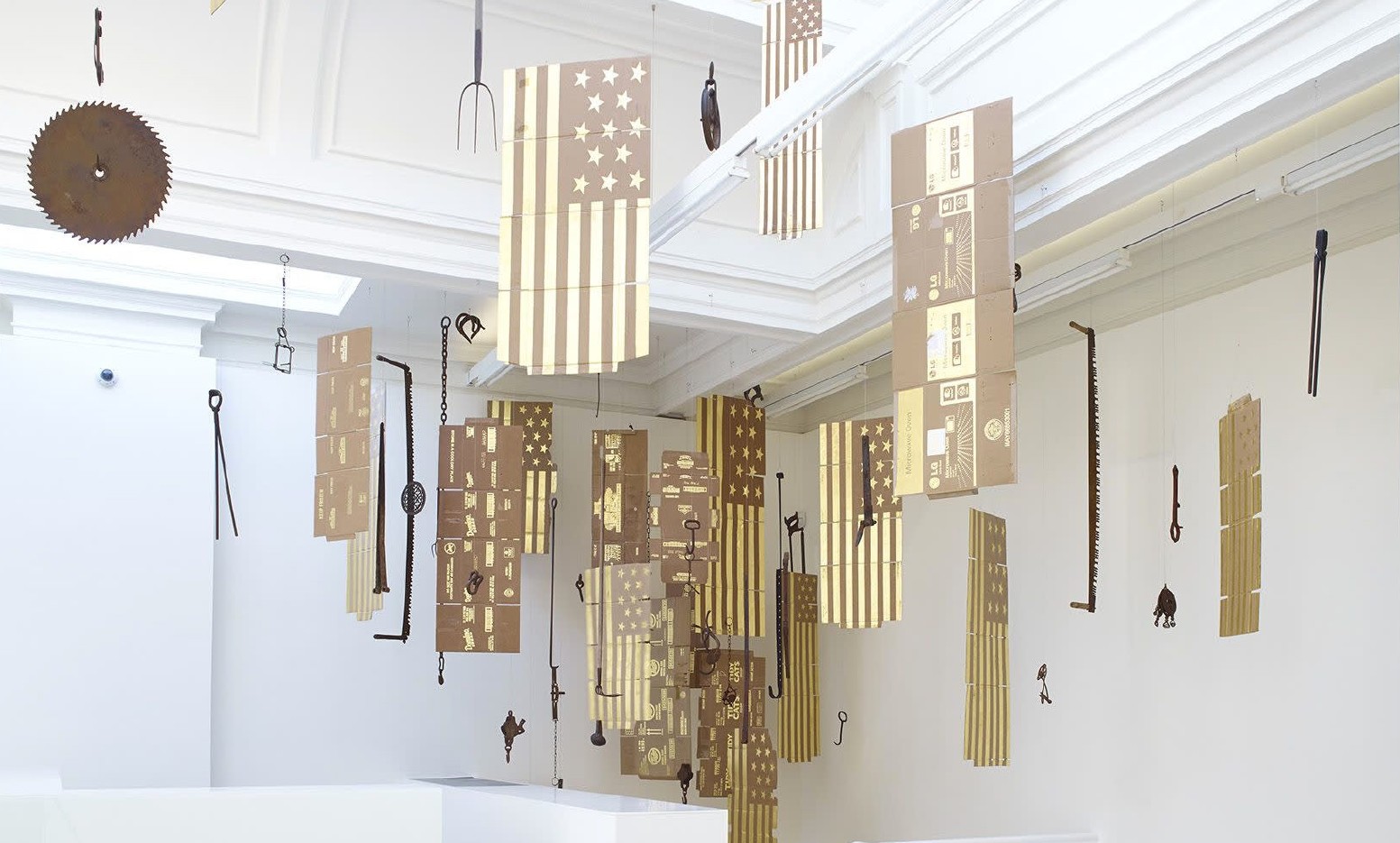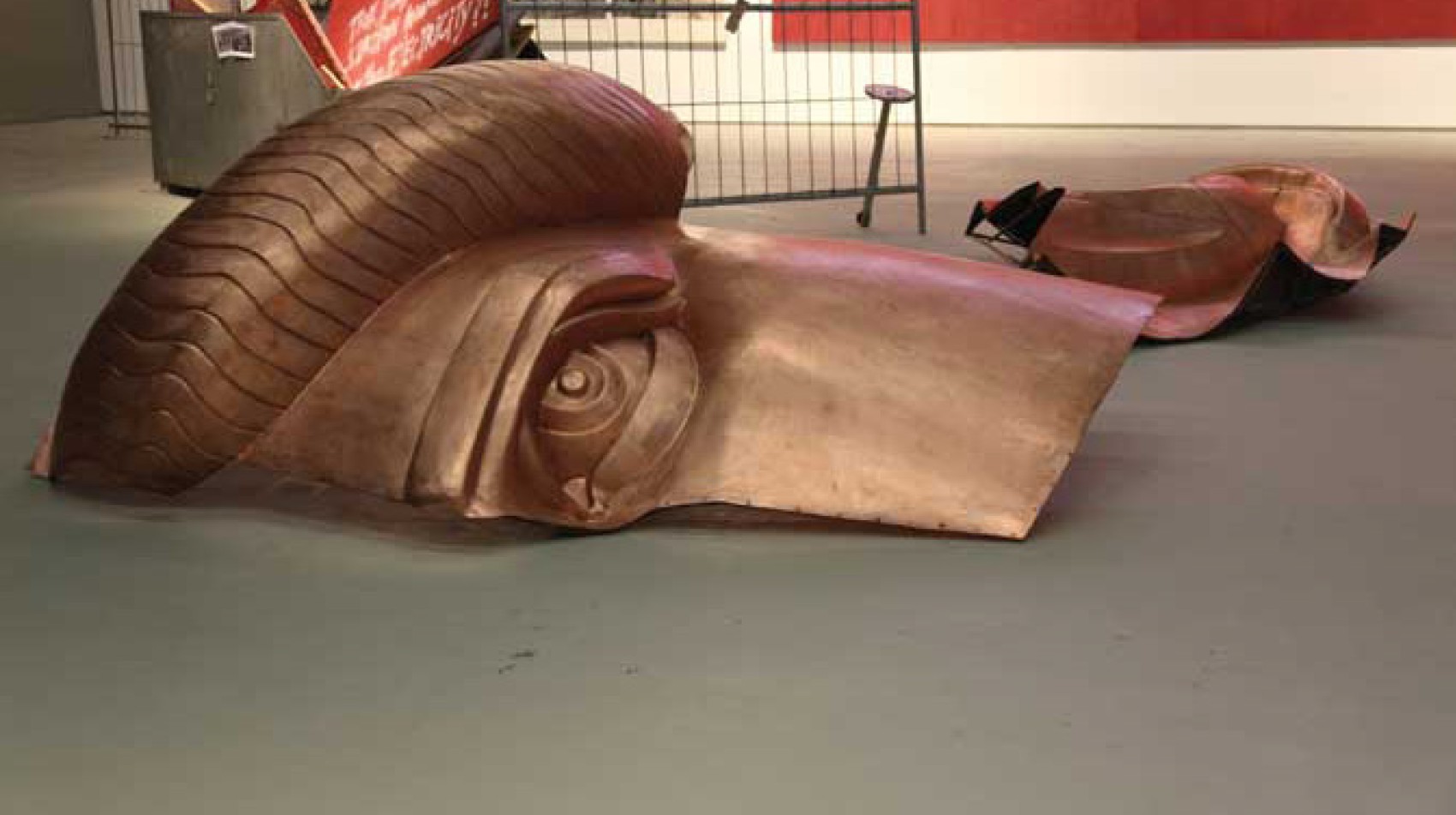An introduction to artist Patrick Alston
An intimate dive into his practice through two artworks
Painter Patrick Alston (b. 1991) is an artist whose practice focuses on gesture and materiality. Through abstraction, Alston’s work forms a reflection on socio-politics, identity, language and the psychology of color. His recontextualised subjects and complex compositions are expressed through gestural mark making and the combination of various materials. SOUTH SOUTH invited the artist to share more about his practice through a self-analysis of two artworks.

Artist portrait. Courtesy of the artist.
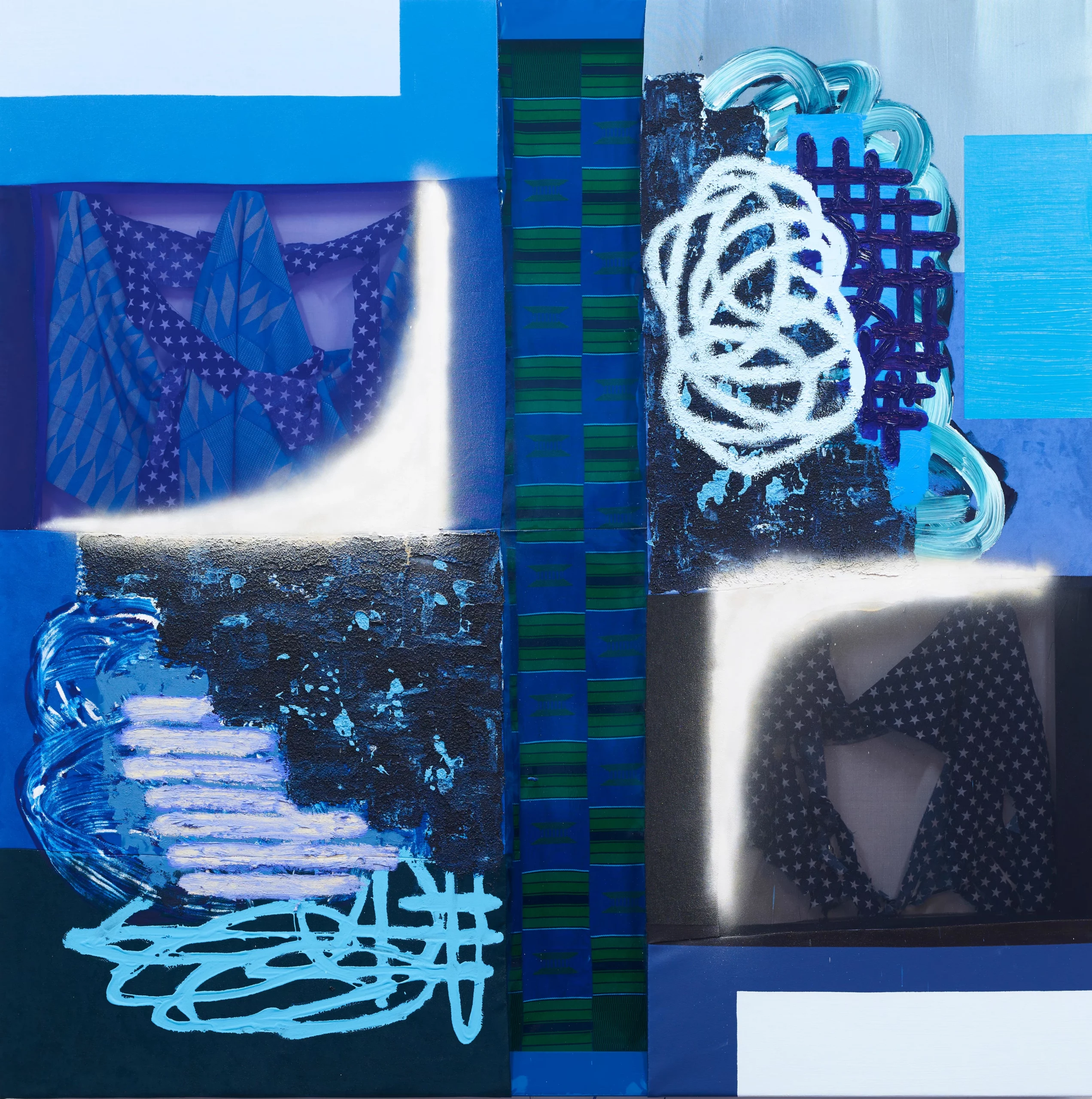
Patrick Alston, The Sea That Parts Us.
Image courtesy of the artist and Bode Projects.
Artist Reflection
An integral part of my practice deals with the exploration of identity. The two works featured were created during a two-month residency in Accra, Ghana. In this series, I explored themes of belonging, displacement, the effects of losing a sense of home, and the power of returning to the continent for those who have been displaced throughout history. This trip was important for me to retrace elements of my lineage and link back to the continent of Africa. I wanted the work to be centered around the many obstacles I encountered in the search for connection.
In the work The Sea That Parts Us I considered the Atlantic Ocean and the many histories it holds about my background, and the barrier it serves as the space between the spectrum of my identity. In the work I utilized Kente cloth as a utopian idea of home, juxtaposed against elements of the American flag, the place I now call home. In one area of the painting the two fabrics are intertwined in a battle for both space and harmony. The surface of the painting serves as a battleground where colours and gestures express these obstacles and the polyphony of my understanding.
I created the work The Door of Return after visiting the Gold Coast castles where enslaved peoples were held and shipped off to the Americas. There was a powerful moment in arriving to “door of no return”. For me, there is a spiritual awakening in having returned to a place in which people from whom I descend were told they would never return. A closure to a story that I feel all of those who are descendants of the middle passage should fulfill.
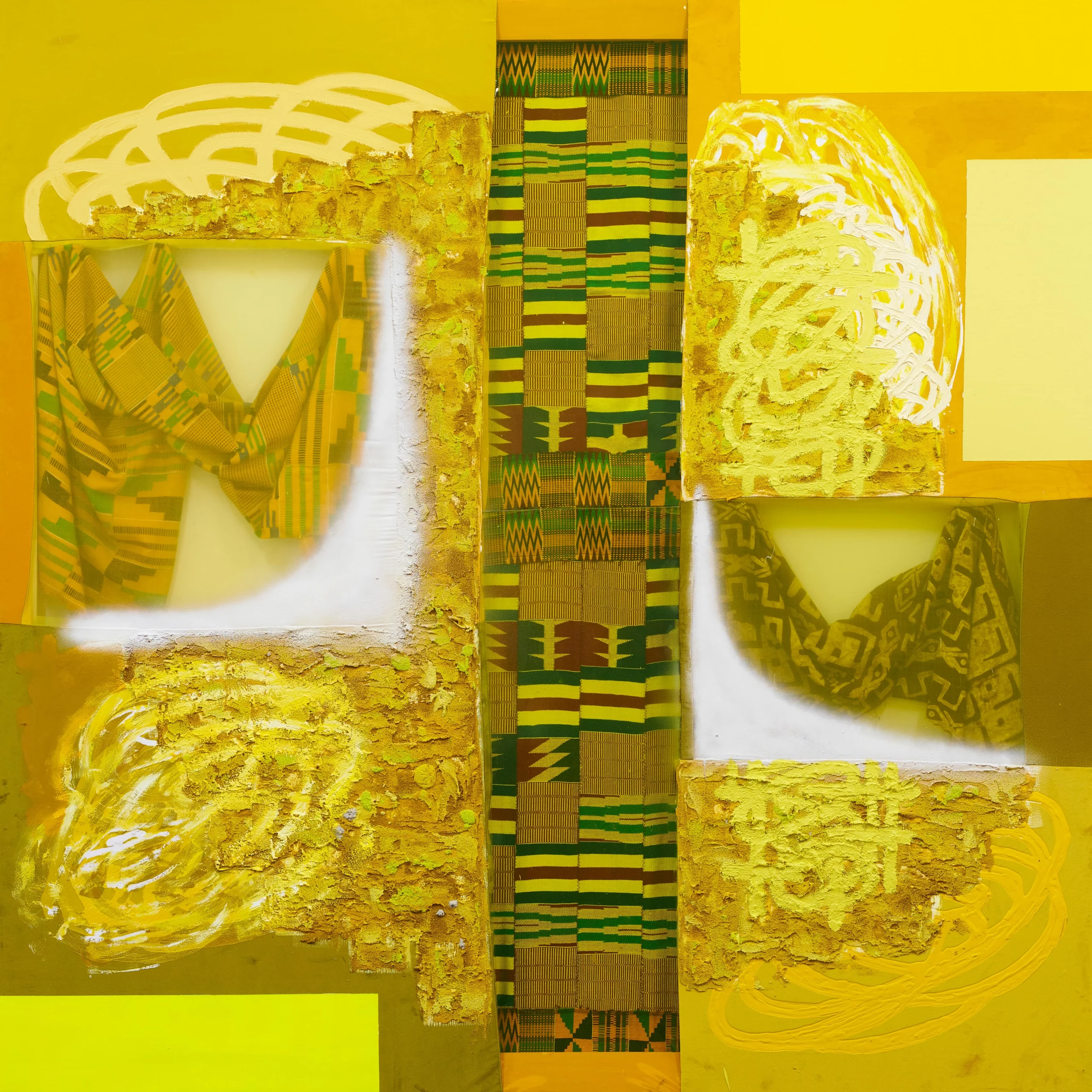
Patrick Alston, The Door of Return.
Image courtesy of the artist and Bode Projects.
More about the artist
In his work, the Patrick Alston draws on the relation between image and language. The selection of his titles plays a crucial role within the artist’s process. Comparing the abstraction of painting to Black English Vernacular as a form of language abstraction, Alston investigates different forms of language, understanding and perception. His visual language relates to painting, and traditional New York graffiti culture with interwoven materials and fabrics which generates a medium to project the unwritten aesthetic of the deconstructed landscape. Aware of traditional art history, Alston refers to Raymond Saunders, Cy Twombly, Mark Bradford and Basquiat as influential artistic figures.
The artist employs varied materials including oil, acrylic and spray paint, resin, fabric and plastic on canvas. Alston’s technique forms an intersection of various layers with different textures which inform tension and balance in his work, often in the form of grids and squares.
Patrick Alston (b. in 1991 in New York, NY, US) grew up in the South Bronx of New York. Alston attended Wabash College in Crawfordsville, IN, US, studying Art and Psychology. Patrick Alston had various solo and group exhibitions throughout the US, and debuted with Bode Projects in various shows in Berlin, DE. He recently held a solo show in London, UK. Patrick Alston lives and works in NY, New York, US.

